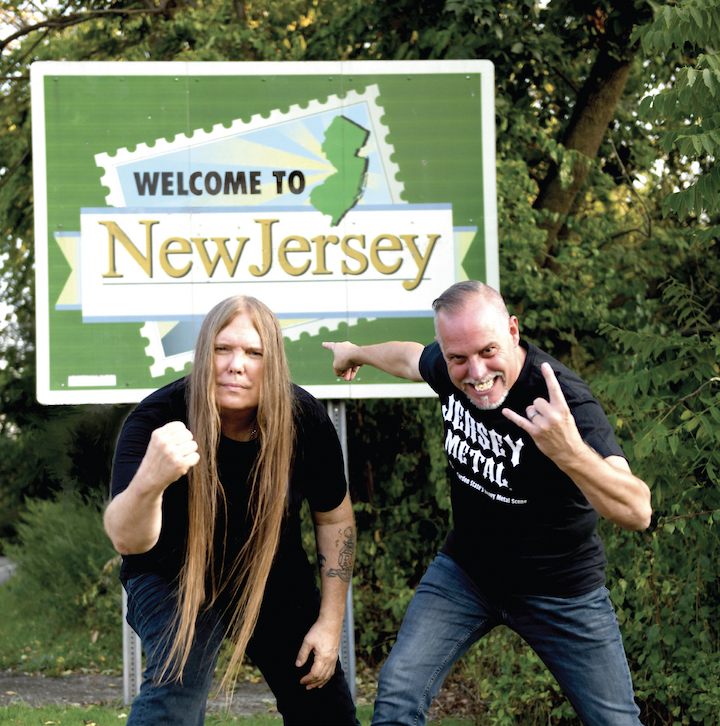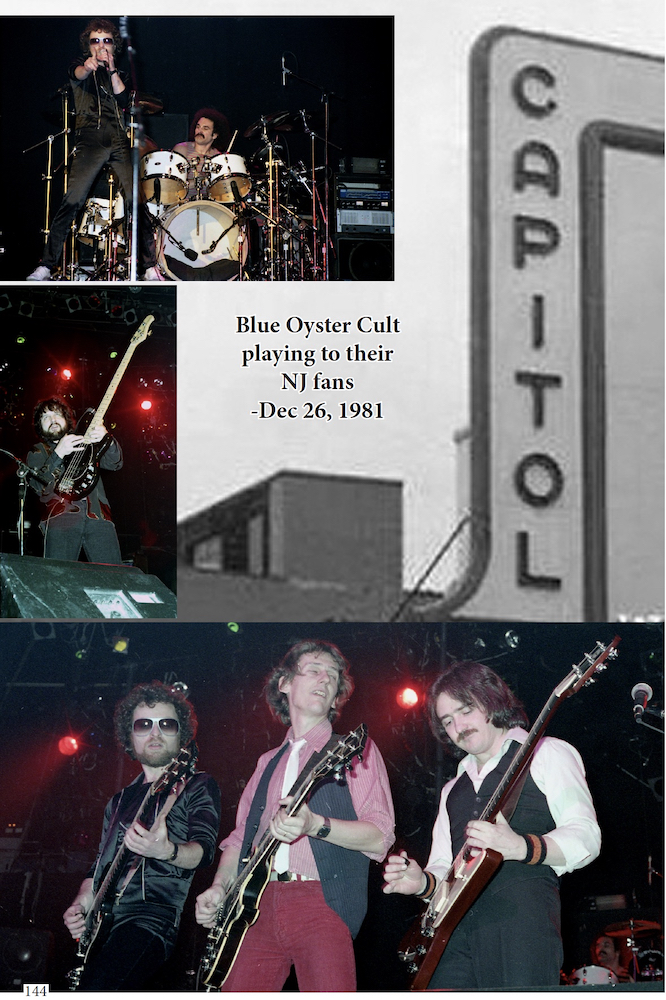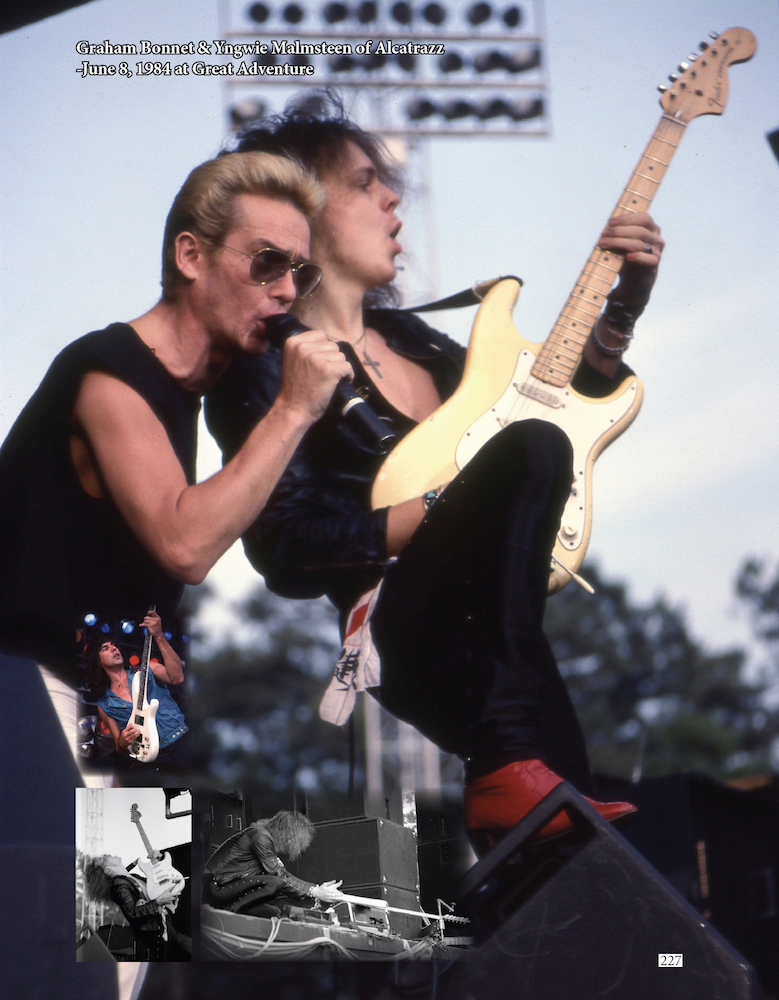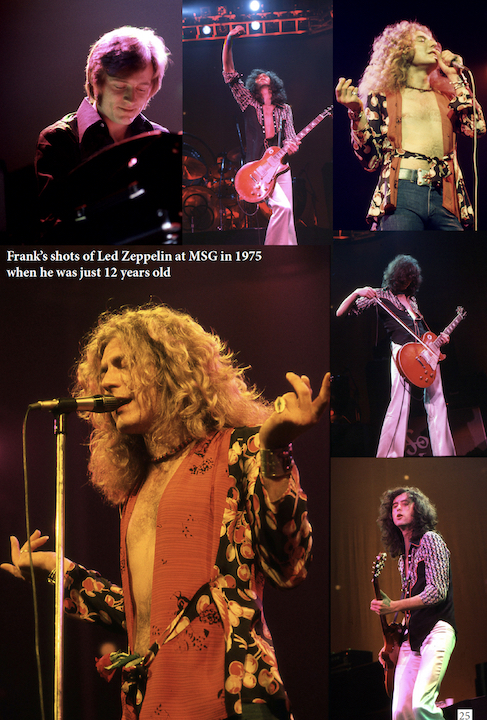We can’t help but look back on memories wistfully, reminiscing over moments that escaped us too fast. Art, in all forms, has to power to suck us in, return us to that time and place, and remind us of how good we had it. Jersey Metal, a written journey and visual documentary, as well as the music behind it, does that – and it’s out now.
The heyday of the New Jersey metal scene was a singular moment in time during which dozens and dozens of clubs, bars, and theaters lined suburban strip malls, highways, and downtowns from Bergen County to Trenton and everywhere in between.
Myriad bands showcased their originals and covers to legions of fans that could see shows seven nights a week if they pleased. Cover bands, and, in some instances, their roadies, could make a full-time living playing upward of five sets a night, six to seven days a week. Record stores carrying the latest metal imports were plentiful, and ads for shows filled the pages of The Aquarian, the leading New Jersey rock weekly.
The scene also consisted of future national acts. Can you imagine seeing Metallica at the Showplace in Dover? Yngwie Malmsteen at Great Adventure? Kiss, Rush, and The Who at the Capitol Theater in Passaic? Or hanging with Savatage at a hotel in Little Ferry? Those lucky enough to have experienced these glory days recall them with great fondness.
Two such people, photographer Frank White and singer Alan Tecchio, have brought the scene vividly to light in their new, all-encompassing tome, Jersey Metal: A History of the Garden State’s Heavy Metal Scene Volume One (1969-1986). The book, through White’s superb photography and his and Tecchio’s engaging stories and namechecks of some 125 bands of the day, are a treat for fans that want to relive that heady time, as well as for young metalheads and others interested in learning about the storied glory days.
Tecchio and White conducted an incredible amount of research for Jersey Metal. The number of bands covered is jaw-dropping. The authors are walking Jersey scene encyclopedias. Photos don’t just cover bands –there are also numerous crowd scenes. Readers may see themselves in the book.
White, a Bergenfield native, started his photography career early, and in a unique way. At the mere age of 12 he took his mom’s camera and sneaked off to Madison Square Garden to see Led Zeppelin. His photos, featured in the book, look like pro shots. He has since photographed hundreds of shows and sessions with bands.
White said that clubs and theaters that started in the late 1970s and lasted into the 1980’s (a few still with us), included the Soap Factory in Palisades Park, Circus-Circus, which became The Circus in Bergenfield, Mothers in Wayne, the Stone Pony in Asbury Park, The Capitol Theatre in Passaic, Convention Hall, (including the Paramount Theater) in Asbury Park, and The Showplace in Dover. This is just to name a few.
Tecchio is a well-renowned singer who throughout his career has fronted Prophecy, Aggressor, Hades, Non-Fiction, Watchtower, All Time Low, Seven Witches, Mike LePond’s Silent Assassins, Autumn Hour, and Level Fields. Many of his bands gained international notoriety.
Jersey Metal is a deep dive yet very approachable, and an exciting, informative, entertaining read. For those that cannot get enough, rejoice. Volume 2, covering 1987 to 2004, and Volume 3, which goes from 2005 to 2021, are in the works. For now, Volume 1 is a must-have for any fan’s bookshelf, so set aside some time and relive, rediscover, or experience for the first time a scene that will always stand loud and proud. We recently spoke with White and Tecchio, the two who are making sure of that.
.
How did the idea for Jersey Metal come about?
Frank: I came up with the idea in 2019. I was going to do another book, but that got shelved. In the process of not being able to do that book, I just had a lot of time on my hands to think about something and, you know what, there hasn’t been a lot written about the New Jersey heavy metal scene. I thought I could maybe pull this off. I have a lot of photographs from the first 47 years of my life. When I did my previous book on Ronnie James Dio I got a hold of Alan through our friend Freddy Dingo, who owns Dingo’s Den and Dingbatz, and he edited my book. He taught me a lot, but the book was published in England and they didn’t use any of his edits.
We started Jersey Metal by making a plan to write stories about our lives, about when Alan started to sing and how I came into photography, selling things, taking my mom’s camera, and sneaking out to concerts in the mid-seventies. Then we talked to bands and got stories together. We added photos from the bands and other photographers, so that helped out.
Alan: I was clearly stoked when Frank approached me. I love Frank White and we go back to the mid-eighties. After what happened with his Dio book, the way it got written in Brit-speak, that doesn’t represent Frank White accurately, and so I rewrote and edited it for him. That led to him asking me to partner up and do Jersey Metal. Jersey Metal is autobiographical for me and him, and we believe it’s an insightful look into the scene that started heavy metal in the Garden state. So we spent the next two-and-a-half years putting the book together. The Aquarian allowed us access to their archives and that was a big help in time lining the events and photos. This first book is actually part of a series.
Frank: Originally we wanted to go from 1969 to 2021. We were counting and we were at 200 pages and not even out of the seventies, so this one we went to the end of 1986, which gave us roughly around 350 pages. We showed everything we possibly could during that time period. It gave us a break so we can now start on the second volume, from 1987 to 2004. It’s during the time that Alan was in Hades. Then the third volume is 2005 to 2021.
Alan, from your perspective being in bands, what was the Jersey scene like?
Alan: The scene was cultivated by the bands that were part of it. There is no scene like that now. Back then, we’d go out to see bands even though we were competing with them, but we were friendly with them at the end of the day. We would pay our way to see shows. Then there was tape trading that introduced bands from across the country to one another… and we all supported each other. I definitely helped grow the Watchtower buzz in New Jersey. (Ironically, Tecchio would later join the Texas-based band.) My pen-pal, singer Jason McMaster from Watchtower, in turn helped grow the Hades buzz in Texas. We might have been rivals but we were friends and we all wanted success.
An important, non-band part of the scene was Jonny Z’s Rock and Roll Heaven shop and the Old Bridge Militia.
Frank: Jonny came along with his wife Marsha and they wanted to open up a music store. They had this great opportunity near where they lived: they had a lot of imports that were hard to find and they catered mostly to the heavier side of music. People flocked to that store, even the bands that came from out of state that had heard about this place. Then he started promoting the bands and started Megaforce Records. He signed Metallica and Overkill and many more bands.
This was also a time when there were record stores in suburban neighborhoods that carried a lot of new metal records. That’s unheard of today.
Frank: That’s what helped me grow my record collection. I bought my first Iron Maiden on vinyl at Pyramid Records in Bergenfield. It was the single, “Women in Uniform.” Just the cover art alone was interesting.
Alan: Back then we would look at album covers. You’d just buy something because it looked cool. At the time, I was into new wave and I had a friend who was just pumping heavy metal down my throat, like the first Ozzy [Osbourne] album. Eventually I went out to find a metal record with a cover that appealed to me. I found one and I was like, “If this record sucks I’m done with this heavy metal stuff.” That record was so cool. It was amazing. It was Iron Maiden’s “The Number of the Beast.” I heard Bruce Dickinson’s voice and that’s what I wanted to do: the full-blown air raid siren, the really crazy, loud push of the voice.
What were your early singing days like? How did you develop your voice?
Alan: I wasn’t very confident so I didn’t really push it, but my friend had a band and totally due to his encouragement I joined… and that was it for me. My first show was a talent contest at Dwight Morrow High School in Englewood. Our 50 or so friends were in the front and said we did great, but I was horrible. I’m being honest. We opened with “Over the Mountain” by Ozzy and I wasn’t good at all. It kind of emboldened me, though. I decided that I was going to take lessons and learn a way to get better at this singing thing.
When in your minds, did you both decide to pursue your one-time side gigs as your professional careers?
Frank: I guess it happened probably around the early eighties. I was working at Dunkin’ Donuts and also had a warehouse job and I was still selling photos in Collectors World in Bergenfield. I guess from all the sales that I did from the past few years, selling photos to friends in a couple different stores and in Seaside Heights on the boardwalk, I saw that I could do it full-time. I didn’t see myself working in a job that was nine to five anymore. I was already being accepted by a couple of magazines, which were Relics and Guitar World. I felt like it was a calling for me. From there I started getting contact with Circus, Creem, Hit Parader, and Kerrang!, it just kept coming from there. I was living at home at the time and my parents were very supportive.
Alan: Probably when I quit college to do it… I didn’t have any support at home. My mom was already dead and my father was fully against it. It was a very negative environment at that point. I didn’t really care if I died, to be honest with you. At that point, nothing really mattered. That’s kind of where my head was at and it was probably the impetus to push me to do this. I eventually came to believe in my singing. I find that success is defined on many levels and although I did not make it happen full-time, I never compromised when it came to my art. It’s a life-long learning process to me, and even today I try to improve in whatever I am doing.
It’s also incredible to think of the number of bands and clubs at that time. Some cover bands could make a full-time living out of music by playing multiple sets six to seven nights a week.
Alan: It’s not just that. The roadies even had full-time jobs working for the bands. These guys really had their stuff together. I remember opening for Edgar Cayce when I was in Non-Fiction. They were a cover band, we were an original band, and there were 2,000 people there to see them. The people working the board and the onstage sound, they were very together. They were pros and that came from working five or six nights a week.
Frank: From what I was told by (Twisted Sister guitarist) Jay Jay French, they would play up to five shows a night and get out at four in the morning and do it the next night and the next night. Bands like Twisted Sister were very new to the music scene in New Jersey. They were just dressing wild at a very early time, right after the hippie era.
Would you say that rock and metal clubs started increasing in the late seventies and early eighties after disco started to lose steam?
Frank: I think you go back to the seventies. That’s when a lot of metal clubs started to come about. With the disco scene faded out, the rock and heavy metal clubs started to flourish even more. That encouraged the club owners to keep their doors open many days during the week. That helped fuel getting more and more clubs open as well as theaters and of course eventually the Meadowlands Arena was built. That helped the concert scene a lot. The Capitol Theatre in Passaic was still promoting shows well into the eighties. You had the Fountain Casino and other clubs along Route 35. You had clubs in Trenton to get people from Philadelphia. North Jersey had the biggest amount of clubs going on in the area. Bands had a lot of opportunities and people got to meet new people. Newspapers and magazines like The Aquarian started reporting on the scene. That was very important.
Alan: The China Club in Hillsdale was huge. Hades held the attendance record there at one time. Also back in the early days it was roller rink battle of the bands and it was churches. I remember Hades coming to check out one of the bands I was in out at a church in Park Ridge. Apparently, they were looking for a drummer and a singer, but they passed on me and our drummer in Prophecy- Joe D’Angeli. It’s all in the book, but they passed on me a couple of times before I ended up singing for them.
How did things change when New Jersey raised the drinking age in 1983 from 18 to 21?
Frank: A lot of clubs had to find different ways of making money. Some places like the China Club were serving beer and alcohol during the week, but on Sunday they would just serve soda and host an all-ages show. Some clubs would only open on Friday and Saturday nights. Bars had to come up with different ideas to get money flowing through their club. They had to search out which bands would do the most damage for them. Twisted Sister was definitely one of them.
Alan: Danny Muro of White Tiger told me that when the drinking age bumped up, their draw got cut in half and it dwindled after that.
Seton Hall University’s radio station, 89.5, had an all-metal format in the eighties. That was another big contributor to the growth of the scene.
Frank: WSOU gave us a lot of information about where shows were and played new music. Bands found another outlet to talk about their career. A lot of bands would play at the colleges.
Alan: Well, WSOU had an impact unlike any other college station around. They actually had thousands of listeners from around the tri-state area and it helped grow bands in a big way. It won’t be until the second volume of Jersey Metal, but the play that WSOU gave our band Non-Fiction got us mad attention and increased our draw at shows dramatically.
What has the reaction been from people that have gotten copies of the book already?
Frank White: A lot of it is really all good thoughts. It’s like they’re reliving their teenage and early adult years. They might even see themselves in the crowd shots. Today there’s so much stuff going on in the world and they look at this book and all of the sudden it changes their day. They can’t put it down because they want to keep looking at all the history there in the photos and stories.
Alan: It just brings them back… It’s all, “Oh, I was at that show!” When we tell people about the book the reaction is, “Are you serious? I’ve got to get this book!” Most of them are blown away that we spent such an incredible amount of time doing this – and they’re just getting their first taste of it because we have two more volumes coming out.
What can you tell us about them? When do you expect them to be released?
Alan: That’s a big question. This one took over two years as we said, but we are well on our way with the other two already since, as Frank mentioned, we had originally set it up as one large volume. I would think at least a year, but who knows? Hopefully we can get it done earlier because doing this first one taught us both a lot about what to do and not to do with the next books.
YOU CAN PURCHASE YOUR OWN COPY OF JERSEY METAL: A HISTORY OF THE GARDEN STATE’S METAL SCENE HERE, AND LEARN MORE ABOUT THIS DUO THAT BROUGHT IT TO LIFE!






